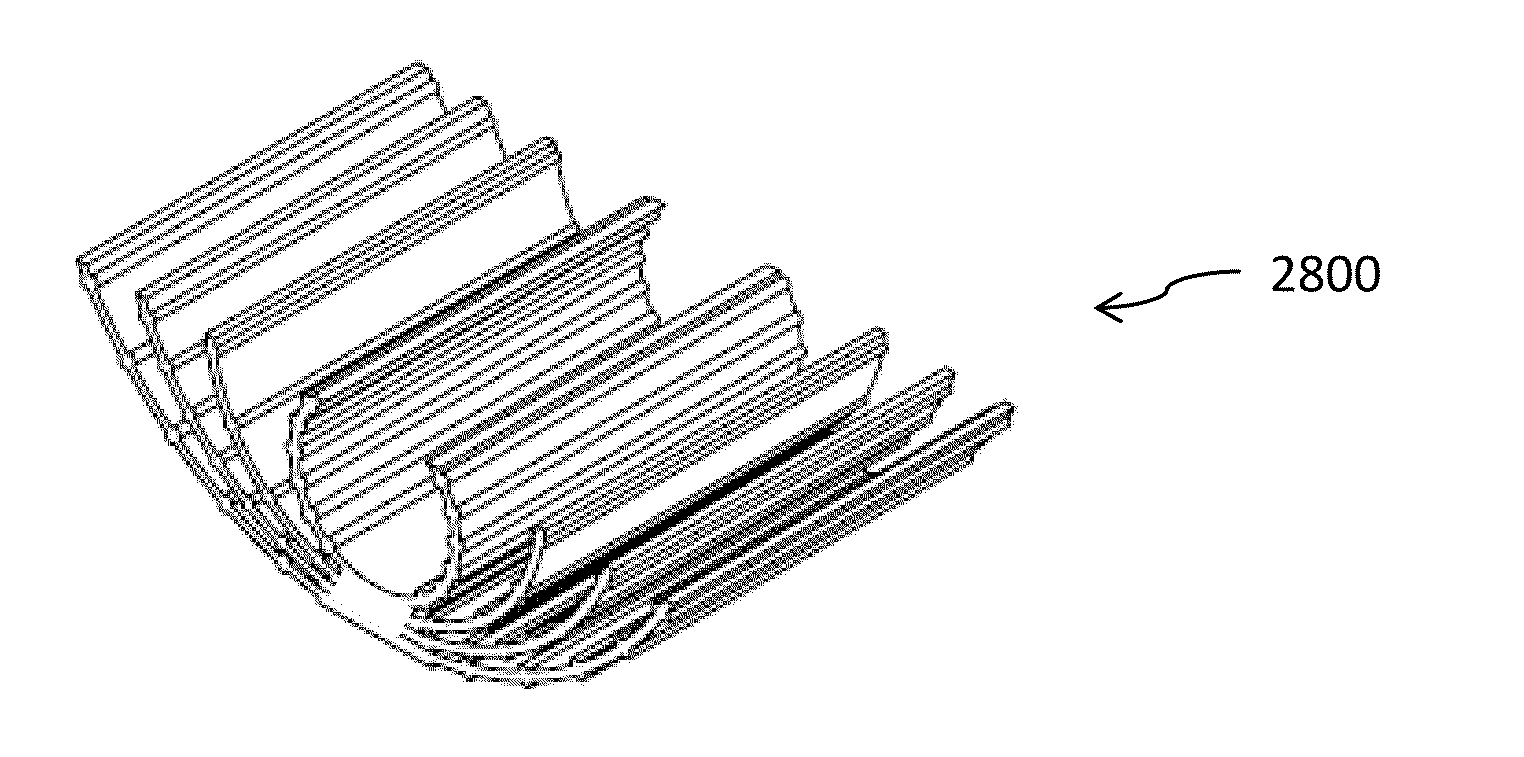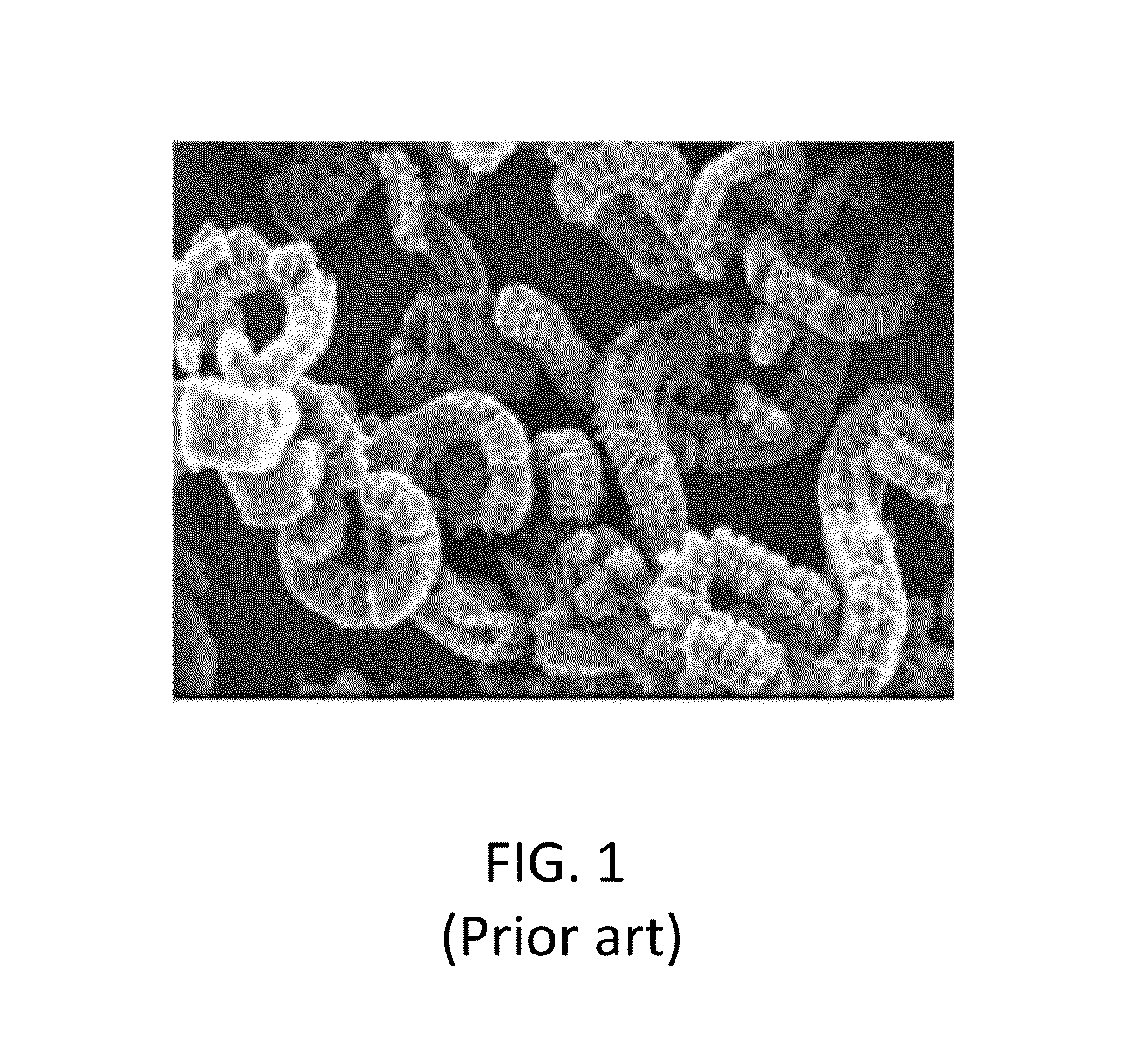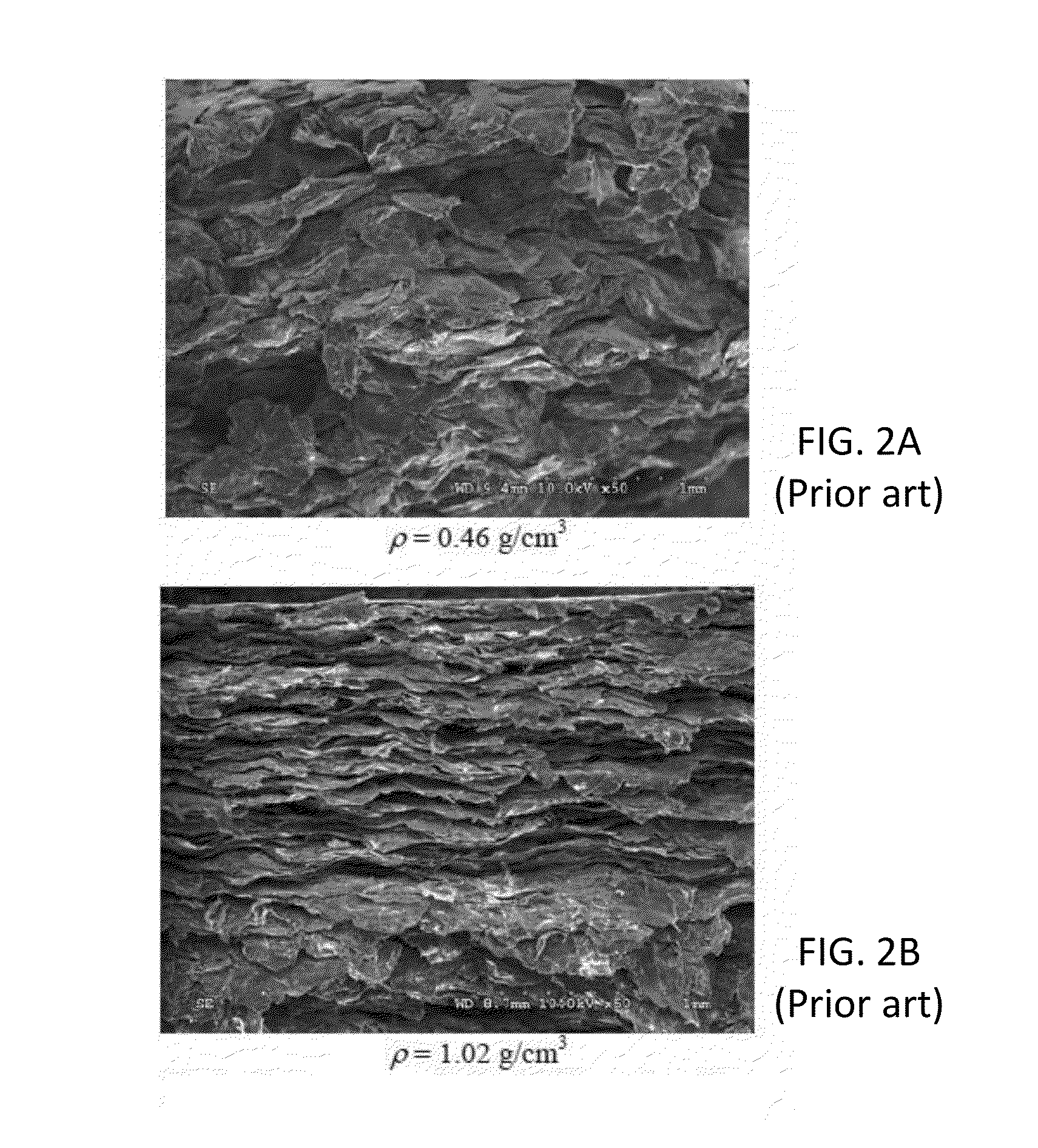Apparatus and Methods for Processing Exfoliated Graphite Materials
a graphite sheet material and apparatus technology, applied in the direction of lighting and heating apparatus, modifications by conduction heat transfer, semiconductor/solid-state device details, etc., can solve the problems of difficult to avoid or reduce air pockets, graphite flakes can trap air pockets, and complex methods, etc., to facilitate air removal and increase the conductivity of flexible graphite sheet material through-plane
- Summary
- Abstract
- Description
- Claims
- Application Information
AI Technical Summary
Benefits of technology
Problems solved by technology
Method used
Image
Examples
Embodiment Construction
)
Prior Art
[0096]FIG. 1 is a scanning electron microscope image illustrating the structure of exfoliated graphite. Exfoliated graphite can be formed from graphite through a series of special furnaces and chemical processes. It can then be compressed to form a low density mat, or to form sheets of flexible graphite of higher density that can be supplied on a roll. For example a calendering process, where exfoliated graphite material is fed through a series of drums or rollers in a process that gradually brings the material to a desired thickness and density range, can be used for form flexible graphite. Calendering or compression forming steps can also be used emboss features on one or both surfaces of the flexible graphite sheet material that are suitable for its end-use application.
[0097]FIGS. 2A and 2B are scanning electron microscope images illustrating exfoliated graphite sheet (flexible graphite) of a lower density structure and a higher density structure, respectively. The lowe...
PUM
| Property | Measurement | Unit |
|---|---|---|
| temperature | aaaaa | aaaaa |
| electrical conductivity | aaaaa | aaaaa |
| electrical conductivity | aaaaa | aaaaa |
Abstract
Description
Claims
Application Information
 Login to View More
Login to View More - R&D
- Intellectual Property
- Life Sciences
- Materials
- Tech Scout
- Unparalleled Data Quality
- Higher Quality Content
- 60% Fewer Hallucinations
Browse by: Latest US Patents, China's latest patents, Technical Efficacy Thesaurus, Application Domain, Technology Topic, Popular Technical Reports.
© 2025 PatSnap. All rights reserved.Legal|Privacy policy|Modern Slavery Act Transparency Statement|Sitemap|About US| Contact US: help@patsnap.com



